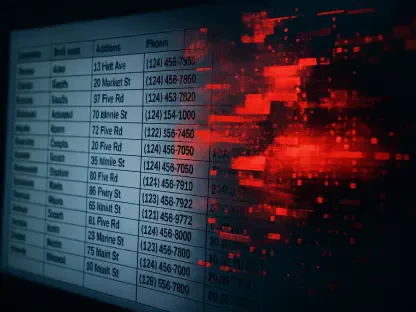In the wake of the 2021 Colonial Pipeline ransomware attack, the Transportation Security Administration (TSA) has proposed new regulations targeting high-risk pipeline and railroad operators to implement comprehensive cybersecurity risk management programs. These measures build on TSA’s recent annual security directives and aim to bolster the resilience of critical transportation infrastructure. By mandating that higher-risk owners and operators adopt practices consistent with the National Institute of Standards and Technology (NIST) Cybersecurity Framework, TSA hopes to address potential vulnerabilities and prevent future cyber incidents.
Scope of the Proposed Regulations
Entities Affected by the Proposal
The proposed regulation is set to impact approximately 300 surface transportation entities, including 73 freight railroads, 34 public transit and passenger railroads, 71 over-the-road bus operators, and 115 pipeline facilities overseen by the Pipeline and Hazardous Materials Safety Administration. These entities will be required to establish and maintain robust cyber risk management programs, reflecting a significant escalation in efforts to safeguard critical national infrastructure. Additionally, they will have to report cyber incidents to the Cybersecurity and Infrastructure Security Agency (CISA) within 24 hours of identification. This stringent reporting requirement is aimed at ensuring a swift and coordinated response to potential cybersecurity threats.
TSA asserts that these new measures align closely with CISA’s forthcoming Cyber Incident Reporting for Critical Infrastructure Act (CIRCIA) regulations, which are expected to be finalized next year. By aligning with CIRCIA, TSA aims to create a more cohesive and comprehensive framework for cybersecurity across various sectors. This move is part of the broader Biden administration’s push to enforce minimum cybersecurity standards across critical infrastructure sectors. Nonetheless, it remains unclear if future administrative changes might affect the momentum behind these proposals, particularly with the Trump administration’s known preference for reducing regulations while still committing to elevate security standards for critical systems and networks.
Key Requirements and Reporting Obligations
Among the crucial requirements of the proposed regulation is the establishment and maintenance of comprehensive cyber risk management programs by affected entities. These programs must incorporate a wide range of cybersecurity practices that adhere to the NIST Cybersecurity Framework, ensuring a robust defense against potential cyber threats. Moreover, the directive emphasizes the importance of rapid incident reporting, stipulating that any cyber incidents must be reported to CISA within 24 hours of identification. This aligns with CIRCIA’s anticipated requirements, underscoring the need for prompt and coordinated responses to cybersecurity incidents.
The Biden administration’s proactive stance on enforcing cybersecurity standards aims to mitigate the risks posed by increasingly sophisticated cyber threats. However, the potential impact of administrative changes remains a point of concern. While the Trump administration has expressed a commitment to enhancing security standards, its broader approach to minimizing regulatory burdens could influence the implementation and enforcement of TSA’s proposed rule. This dynamic highlights the complex interplay between regulatory rigor and the need for operational flexibility across different administrative priorities.
Regulatory Harmonization and Challenges
Balancing Consistency and Operational Practicality
A significant aspect of the TSA’s proposal is its focus on regulatory harmonization, which aims to streamline cybersecurity regulations, reduce industry burdens, and ensure consistency with established standards set by NIST and CISA’s cyber performance goals. TSA acknowledges that complete harmonization may be challenging due to inherent operational differences across various transportation modes, physical control requirements by other agencies, and sector-specific complexities. For instance, implementing multifactor authentication on industrial control workstations may be impractical in certain environments due to the necessary access requirements and operational constraints.
Despite these challenges, TSA remains committed to achieving as much regulatory harmonization as possible. The proposed rule invites industry and public comments on potential opportunities to harmonize regulations and streamline requirements where feasible and appropriate. This collaborative approach seeks to balance the need for stringent cybersecurity measures with the practical realities faced by different segments of the transportation sector. By soliciting feedback, TSA aims to refine its proposal and ensure that it effectively addresses the unique challenges of each sector while maintaining a high level of cybersecurity resilience.
Industry and Public Engagement
Following the 2021 Colonial Pipeline ransomware attack, the Transportation Security Administration (TSA) has put forward new regulations aimed at high-risk pipeline and railroad operators. These operators are required to implement extensive cybersecurity risk management programs. These new measures build upon TSA’s annual security directives and are designed to strengthen the resilience of vital transportation infrastructure.
The TSA’s proposal mandates that higher-risk owners and operators adopt cybersecurity practices aligned with the National Institute of Standards and Technology (NIST) Cybersecurity Framework. This adherence aims to address potential vulnerabilities within the sector and prevent future cyber incidents. By ensuring these critical infrastructure operators follow rigorous cybersecurity standards, the TSA hopes to mitigate risk and enhance the overall security and reliability of the nation’s transportation systems. This comprehensive approach is part of a broader effort to safeguard against the increasing threat of cyberattacks on crucial infrastructure.









